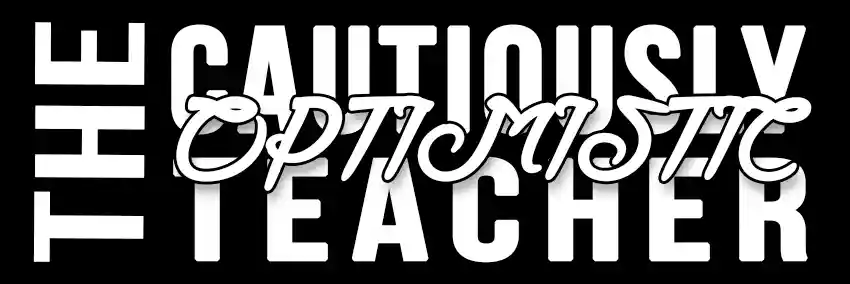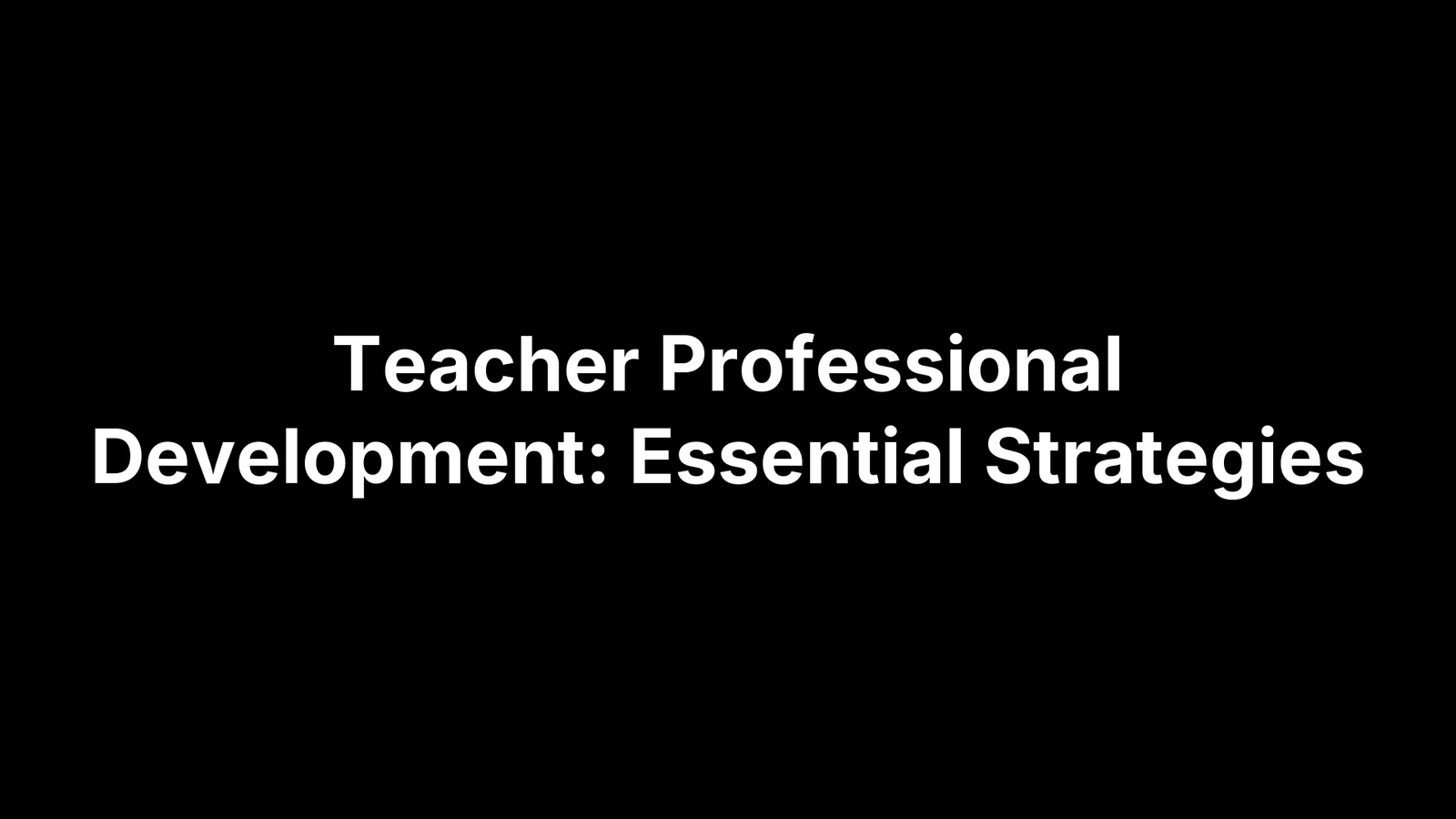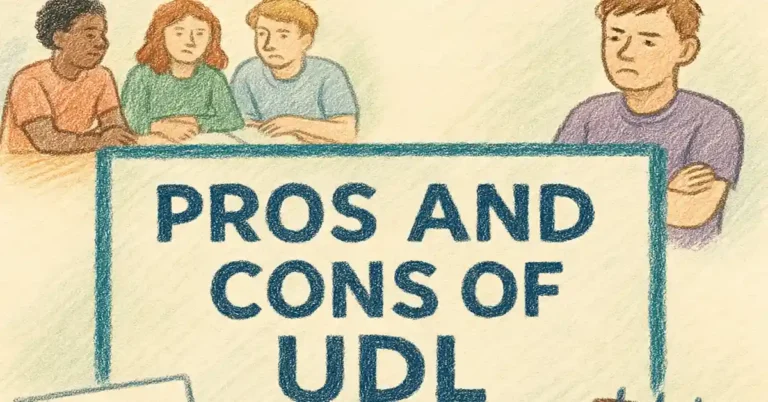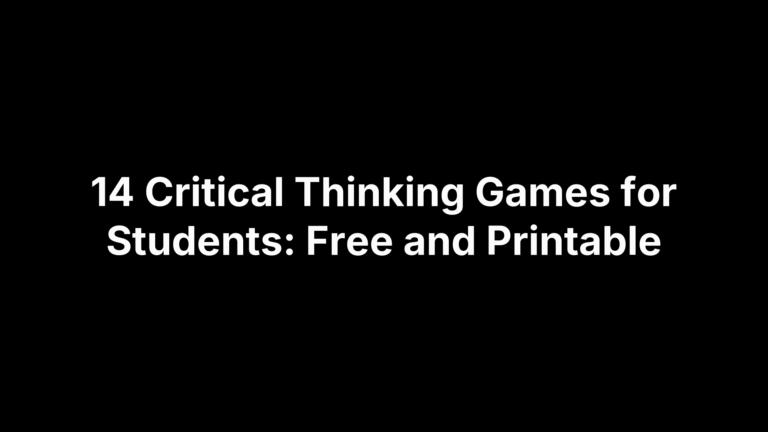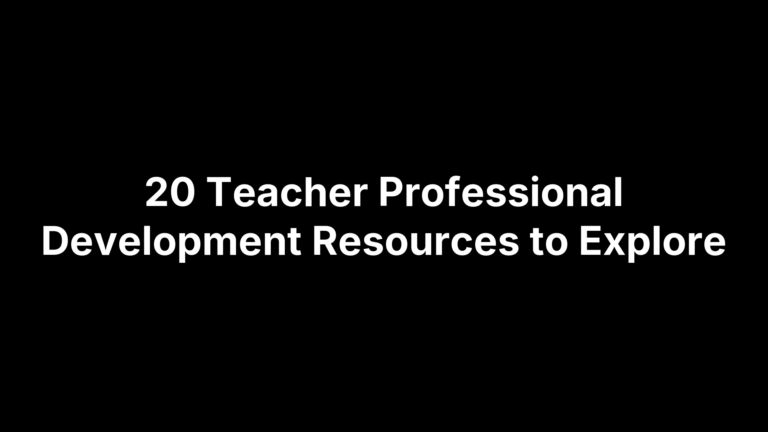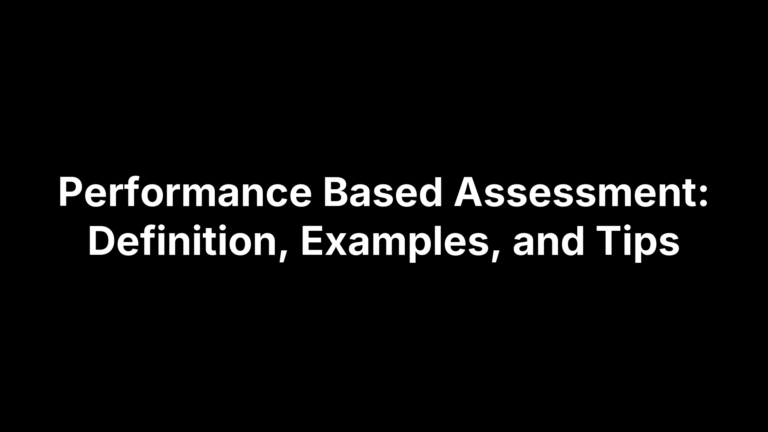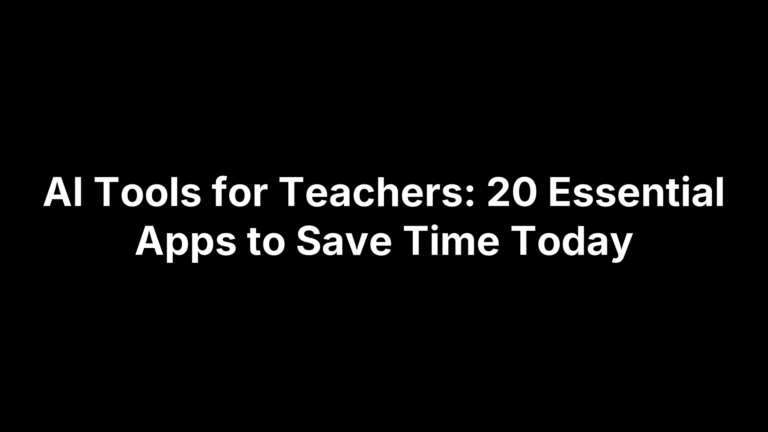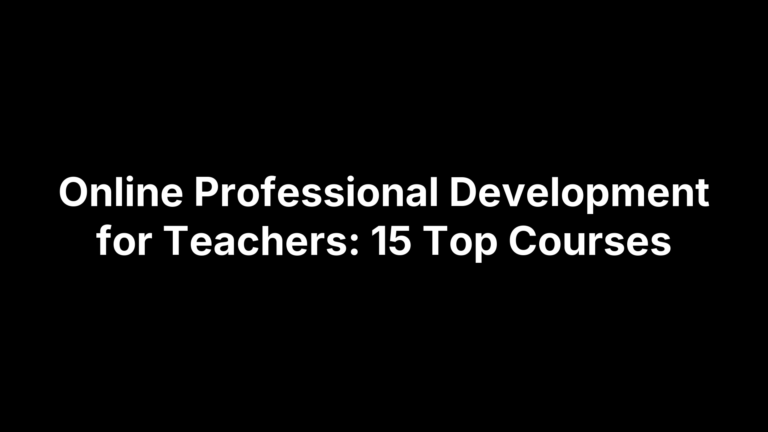Teacher Professional Development: Essential Strategies
High-quality teacher professional development (TPD) is more than an item on a compliance checklist; it fuels responsive instruction and better student learning. When PD is sustained, collaborative, and tied to real classroom challenges, it sharpens pedagogy, lifts engagement, and opens doors for career advancement. Yet many educators still endure one-off slide shows that waste time and inspiration.
This guide cuts through the noise. First, we define TPD and bust the myths holding schools back. Then we unpack the characteristics of impact-driven learning, compare delivery models—from coaching cycles to online badges—and share ready-to-use tactics you can try tomorrow. You’ll also find tips for selecting credible providers, overcoming time and budget hurdles, and tracking evidence of student growth. If you’re determined to make every PD minute count, the playbook starts now—get ready to shift from passive hours to purposeful growth and transform your classroom, one informed step at a time.
Understanding Teacher Professional Development
Before we start evaluating programs and strategies, it helps to stake out a common definition. The term “teacher professional development” (TPD) is used so loosely that conversations often slide past each other. The next three mini-sections give us shared footing.
Definition and Core Purpose
Teacher professional development is structured, ongoing learning that changes teacher practice and, in turn, improves student outcomes. Training focuses on a finite skill—think “how to run the new LMS.” Professional learning, by contrast, is iterative: study, apply, reflect, refine. Effective TPD blends both, threading new knowledge through cycles of classroom experimentation and feedback.
Impact on Student Outcomes and Teacher Growth
Research syntheses from the Learning Policy Institute show that 30–50 hours of well-designed PD can move student test scores up a full percentile. Teachers report higher confidence, use more varied questioning, and stay in the profession longer. Picture a ninth-grade teacher who pilots culturally responsive discussion norms; within weeks, participation rises and discipline referrals drop.
Common Myths and Misconceptions
- One-and-done workshops work ➜ Multi-session, coached models produce deeper change.
- PD is only for novices ➜ Veteran teachers gain just as much when learning is personalized.
- Online PD is inferior ➜ Blended formats often match or exceed face-to-face results when interaction is built in.
Characteristics of High-Impact Professional Development
Not every workshop, webinar, or graduate credit course deserves your precious prep time. High-impact teacher professional development shares a predictable DNA: it stretches across time, makes teachers active learners, syncs with district priorities, and thrives in a culture of trust and reflection. Keep an eye out for the following hallmarks when evaluating any PD offer.
Sustained and Ongoing vs. One-Off Workshops
Research pinpoints the sweet spot at roughly 30–50 hours spread across a semester or year. Multi-session series, coaching cycles, and lesson-study groups give teachers time to practice, collect evidence, and circle back for feedback. A single sit-and-get may spark curiosity, but without structured follow-ups the new strategy rarely survives beyond Friday.
Active, Experiential Learning Components
Teachers learn best the same way students do—by doing. Look for sessions that incorporate:
- Peer micro-teaching and immediate critique
- Classroom simulations or role-play
- Lesson study with real student work
- Technology sandboxes where participants build, not just listen
These hands-on elements turn abstract theory into muscle memory you can deploy Monday morning.
Alignment with Standards and School Goals
When PD supports existing initiatives it attracts funding, leadership attention, and time on the calendar. Use this quick alignment check:
- Does it address a priority standard or SIP goal?
- Is there a clear student data need driving the topic?
- Are success indicators measurable and observable?
- Is an implementation timeline attached?
If you can’t tick each box, the offering may be a detour rather than a catalyst.
Collaborative and Reflective Culture
High-impact PD happens in community. Professional Learning Communities, cross-grade teams, and “critical friends” protocols create safe spaces to wrestle with practice. Structured reflection—journals, video analysis, or short PDSA cycles—helps teachers convert experience into insight and sustains motivation long after the facilitator leaves the room.
Effective Delivery Models for Professional Learning
Great content still falls flat if the format doesn’t match teachers’ needs or schedules. Below are four evidence-backed delivery models that turn teacher professional development into lived classroom practice rather than theoretical wish-lists.
Coaching and Mentoring
Instructional coaching pairs a teacher with a trained coach for goal-setting, classroom observation, and non-evaluative feedback. Peer coaching follows the same arc but swaps a colleague for a specialist, while formal mentoring links novices with veterans for an entire year. Research shows that three to six feedback cycles—plan, observe, debrief—lead to noticeable shifts in student engagement and teacher retention.
Professional Learning Communities (PLCs)
DuFour’s four guiding questions—What do we want students to learn? How will we know? What will we do if they don’t? What if they already do?—anchor effective PLCs. A tight meeting agenda (data dive ➜ lesson study ➜ action plan) keeps sessions under 45 minutes yet drives continual improvement through collective ownership of results.
Online and Blended Learning Platforms
Synchronous options such as live webinars or virtual conferences offer real-time Q&A and breakout rooms. Asynchronous tools—self-paced MOOCs, discussion boards, podcast series—let teachers learn during commutes or planning periods. Combine the two for maximum flexibility: watch the module, try the strategy, then meet on Zoom for reflection and next steps.
Micro-credentialing and Badge Systems
Micro-credentials break complex competencies into bite-sized, evidence-based challenges. Platforms like state PD portals or ISTE award digital badges that often convert to Continuing Education Units or movement on district salary lanes. The clear “earn-showcase-apply” loop keeps motivation high and documentation simple for license renewal.
Essential Strategies Teachers Can Apply Immediately
Teacher professional development does not have to wait for the next district institute day. The tactics below can be deployed during your prep period or over the weekend, giving you instant traction without extra funding or permission slips.
Setting Personalized Learning Goals
Swap vague wishes (“get better at questioning”) for a SMART goal that aligns with your evaluation rubric.
By December 15, I will increase the ratio of open-ended questions in Algebra I from 20% to 60%, as measured by two peer observations and my post-lesson reflections.
Post the goal near your desk, schedule two quick check-ins with a colleague, and collect evidence as you teach.
Leveraging Classroom Observation and Feedback
Invite a peer for a 10-minute walkthrough focusing on one indicator (e.g., wait time). Use a simple feedback card:
- What I noticed
- Impact on students
- One question to ponder
Record yourself the same week and compare notes; the triangulation accelerates growth.
Using Action Research to Solve Classroom Challenges
- Identify a classroom pain point (low exit-ticket completion).
- Plan an intervention (QR-code exit slip).
- Act for two weeks while tracking completion rates.
- Reflect, tweak, and share findings in your PLC.
This mini inquiry cycle embeds PD inside everyday practice.
Gamifying Your Own Professional Learning
Turn growth into a game board: earn 10 points for reading an article, 20 for trying a new strategy, 30 for sharing results. Level up after 100 points and reward yourself with a coffee or new book. Digital trackers like Habitica keep the scoreboard visible—and the motivation high.
Finding and Selecting the Right PD Opportunities
With thousands of webinars, graduate courses, and “edu-celebrity” conferences jockeying for your time and money, choosing teacher professional development can feel like speed-dating on turbo. A quick vetting system keeps you focused on experiences that actually move the needle for students—and fit your budget, schedule, and certification needs.
Evaluating Quality and Credibility of Providers
Run every offering through this litmus test:
- Clear learning objectives tied to teacher or student standards
- Built-in practice and feedback, not just lecture
- Evidence base cited (research or classroom data)
- Post-session support—coaching call, community forum, or follow-up task
Red flags include paywalls before syllabi, no facilitator bios, and promises of “quick fixes.”
Free and Low-Cost Options (Webinars, MOOCs, District Offerings)
Stretch the PD budget by bookmarking:
- Federal OER hubs with archived webinars earning CEUs
- University-hosted MOOCs (Coursera, edX) that issue completion certificates
- Museum or nonprofit educator series—often provide lesson downloads plus badges
Pro tip: Screenshot attendance or download digital badges immediately for your records.
Maximizing Conferences and Workshops
Before: map sessions to your growth goal and schedule meet-ups with colleagues.
During: take notes in a shared doc, live-tweet key quotes, and collect presenter emails.
After: within 48 hours draft an implementation plan—what, when, evidence of success—and share it with your PLC for accountability.
Building a PD Portfolio for Certification and Career Advancement
Archive artifacts in a single cloud folder: certificates, revised lesson plans, student work samples, reflection summaries. Tag each file with the corresponding teaching standard for easy retrieval when license renewal, micro-credential submission, or job interviews roll around.
Overcoming Common Barriers to Ongoing Professional Growth
Even veteran teachers hit speed bumps that derail professional growth—packed schedules, empty budgets, flagging energy. The good news: each obstacle has a workaround that fits real classrooms, not wish-list scenarios.
Time Management and Scheduling Hacks
Treat PD like a class you teach: block a weekly 45-minute “power hour,” silence notifications, and use calendars to batch readings or videos. Commute podcast playlists and flipped PD (watch, then meet) free prime planning periods.
Securing Funding and Resources
Small grants and reimbursements exist; they just need a crisp pitch. Tie the request to student data, show a budget under $500, and cite matching funds. DonorsChoose, NEA Foundation, and local PTO mini-grants are fast wins.
Maintaining Motivation and Preventing Burnout
Link every goal to a visible student benefit—post a tracker by your desk. Pair with a colleague for accountability texts, and schedule micro-celebrations (Friday coffee) after each milestone. Mindfulness apps during passing periods reset mental bandwidth.
Integrating Learning into Daily Practice
Adopt a quick ‘learn-try-reflect’ loop. After each lesson, jot two sentences: what I tested, what students did. Share the note in your PLC chat. These micro-reflections cement habits without adding another after-school meeting.
Measuring the Impact of Professional Development
If you can’t prove growth, even the most inspiring workshop risks being cut next budget cycle. Building a simple, evidence-rich evaluation plan turns teacher professional development into an investment the whole school can see and sustain.
Setting SMART Indicators Before You Begin
Clarify success upfront. Pair a student metric (e.g., “average writing rubric score”) with a teacher practice metric (e.g., “frequency of modeling think-alouds”). Make both SMART:
By March 30, 80 % of students will score 3+ on the argument-writing rubric, and I will model think-alouds in at least 4 of 5 observed lessons.
Collecting Evidence: Student Data, Surveys, Self-Reflection Journals
Triangulate data over time:
- Quantitative: quiz scores, attendance, behavior logs
- Qualitative: student voice surveys, exit tickets
- Reflective: weekly journal entries or short video analysis
A shared spreadsheet or Google Form timestamps each data point, making progress visible at a glance.
Iterating and Scaling Successful Practices
Use a mini Plan–Do–Study–Act cycle every six weeks. If indicators move, codify the routine—template the lesson, film a model, share results in the PLC. If they stall, tweak variables and restart the cycle. Small, documented wins accumulate into school-wide best practice.
Key Takeaways for Lifelong Learning
Teacher professional development is most powerful when it is sustained, active, and purpose-built. Start by setting SMART goals that tie directly to student data, then choose delivery models—coaching, PLCs, online micro-credentials—that provide practice and feedback over time. Guard your calendar with weekly “power hours,” leverage free or low-cost webinars, and document every artifact in a living PD portfolio. Measure impact with paired student and teacher indicators, iterate in short Plan–Do–Study–Act cycles, and scale what works across your team.
Remember, growth thrives in community. Whether you gamify your own learning or join a cross-grade PLC, surround yourself with colleagues who will challenge, cheer, and hold you accountable. When motivation dips, reconnect the learning to a concrete classroom win—an engaged discussion, a stronger essay, a calmer transition.
Ready for the next step? Explore more strategies and AI-powered tools at The Cautiously Optimistic Teacher and keep the momentum going.
